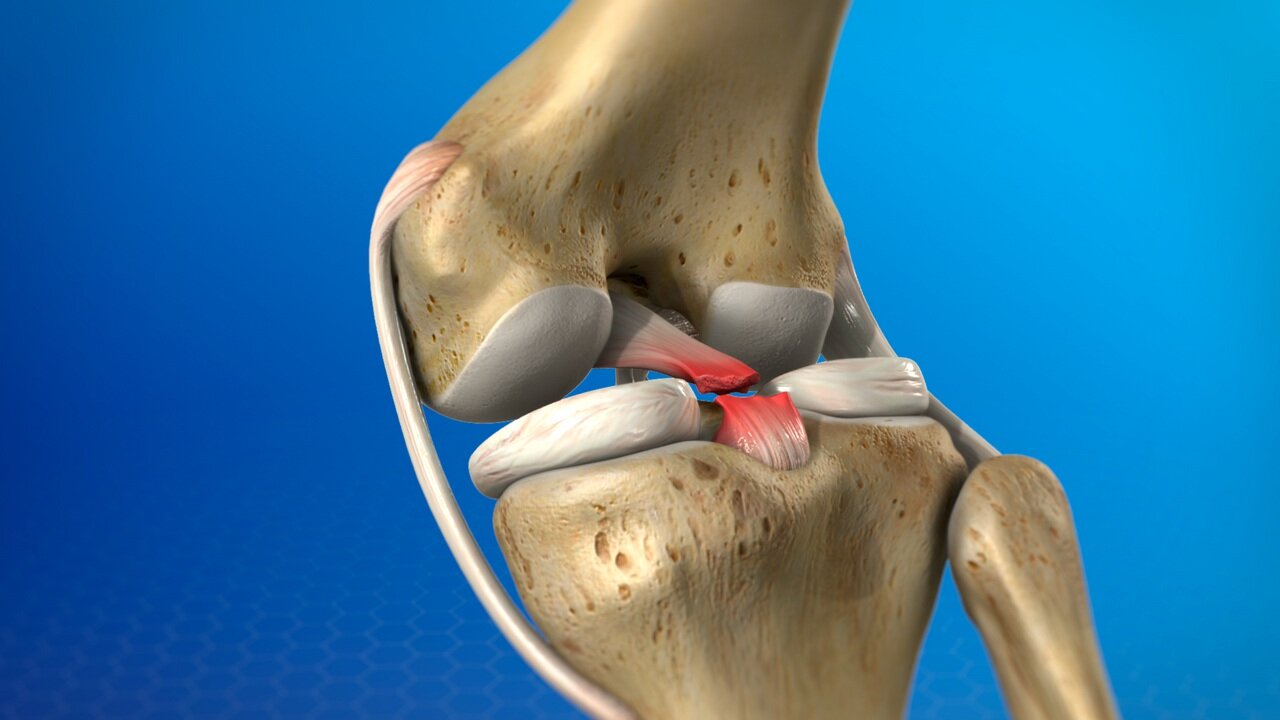Posterior Cruciate Ligament (PCL) Reconstruction
This information page provides information on the nature and purpose of the procedure in addition to an outline of the post-operative rehabilitation.
Purpose and description of the procedure
The PCL is the largest ligament in the knee and stops the shin bone (tibia) from moving too far backwards.
It is commonly injured by a blow to the front of the upper shin, such as during a fall onto the flexed knee. Hyperextension (over straightening) and hyperflexion (over bending too far) of the knee can also tear the PCL and it is often torn in high energy injuries dislocating the knee such as falling from a height or in RTA's. Not everyone who has a PCL injury will require surgery as milder or partial isolated tears (no other ligaments involved) can heal just with the aid of an appropriate brace and rehabilitation. When torn the problem symptom is a feeling of ‘looseness’ and a feeling of giving way.
Often a brace is recommended, holding the tibia forwards and controlling stability. This helps predict who would respond well to the operation. The knee can tolerate some looseness associated with a healed PCL ligament but it depends on the required sport and how the ligament heals.
The operation
The operation takes approximately 1½ -2 hours and is mainly an arthroscopic keyhole procedure, with additional small incisions to take the tendons for the repair. The most commonly used graft is using the hamstring tendons, taken through a small 4-6 cm incision just below the joint line. The 2 hamstring tendons are collected and folded over to form a four strand graft. This is then passed through tunnels drilled in the knee and the graft is fixed with a variety of screws, pins and/or staples to provide a secure fix, matching the original position of the ruptured ligament. Sometimes a donor graft tendon is used. The wounds are normally closed with stitches that will need to be removed, and the leg is initially covered with a wool and crepe bandage. A brace - locked in extension (straight) - is fitted at the end of the procedure which helps to protect the graft in the early weeks of recovery.
Expectations and results following surgery
The success rate for PCL surgery is around 7-8 out of 10 - i.e. achieving good functional stability and return to activity and sport. 2-3 in 10 may still have problems with the knee not feeling tight enough or problems of pain if the joint surfaces are damaged. Full recovery back to sport is around 9-12 months and post op rehabilitation physiotherapy is the key.During the Hospital stay
Surgery involves overnight stay with discharge home approximately midday the following day. The knee is held still in a knee splint brace applied immediately following the operation and the bandages are removed on the morning.
Outpatient physiotherapy
This usually starts within the first 1 - 2 weeks following surgery and should be arranged before discharge. Basic exercises are given to do for this period between discharge and physiotherapy starting.Post-operative care
Rehabilitation is a slow process as the ligament heals in place. In principle the first phase is regaining movement and reducing swelling as the ligament heals firmly in place, the second phase is building strength and this is followed by the functional phase back to activity. We cant progress the stages until the right progress has occurred and the knee is ready. Gravity unfortunately works against the ligament and the tibia is always falling backwards - pulling on the new ligament. The knee is therefore supported in a special brace actively holding the tibia forward - reducing load on the healing graft.
In brief the principles are:
Weight Bearing: Partial weight bearing for 6 weeks then build to full weight bearing by 8 weeks. Knee brace: Initial temporary knee splint brace is replaced by the special PCL brace as soon as the swelling around the knee allows. The brace is worn day and night for 6 weeks and then just during the day for a further 6 weeks. We have modified the regime from the published program recognising that the brace is uncomfortable to wear for the full 24 week program, however the longer the brace is worn the better the support to the healing ligament. Clinic review with surgical team: Clinic appointments are usually at 2 weeks, then at 6, 12 weeks, 6 and 9 months, tailored to requirements. Physiotherapy appointments are arranged individually. Further Rehabilitation and progression to sport: The exact time for return to contact sport must be discussed with the surgeon and is dependant on the type of surgery and the sport.
Post-Op Posterior Cruciate Ligament bracing Protocol
Prior to or on day of surgery the physiotherapist or orthotist will measure patient and order PCL dynamic brace
At the end of operation patient is fitted with a brace to be worn at all times including at night for the first 3 weeks - May remove brace for range of motion physio exercises and to wash leg
At 3 weeks the brace to be changed to PCL dynamic brace as initial post-op swelling should have improved - Allow 0-90 degrees of flexion (this is the default setting of the PCL dynamic brace) - Wear PCL dynamic brace at all times including at night until 8 weeks
At 6-8 weeks when reviewed in clinic remove the ‘90’ degree stop from the brace to allow full range of movement - Continue with dynamic brace at all times except physio exercises until 3 months post-op - May stop using brace at night after 3 months
Continue dynamic brace when walking for 4-6 months post-op as discussed with Mr Damasena.



